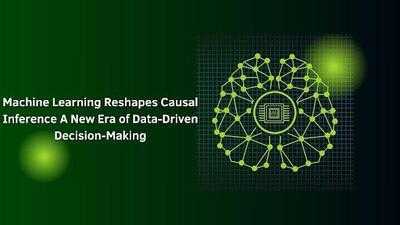

In the evolving landscape of data science, is revolutionizing causal inference, a field traditionally dominated by statistical methodologies. This transformation is extensively explored by Huzaifa Fahad Syed, who delves into the innovative integration of ML algorithms with causal inference techniques. His research highlights how these advancements are redefining decision-making frameworks across multiple industries.
Overcoming the Limitations of Traditional Methods
For years, causal inference relied on conventional statistical approaches like instrumental variables and propensity score matching. While these methods have been invaluable in fields such as healthcare and economics, they struggle with scalability, handling confounders, and modeling heterogeneous treatment effects. The introduction of ML-based approaches addresses these challenges by leveraging computational power and advanced algorithms to extract meaningful causal relationships from complex datasets.
The Rise of Machine Learning in Causal Analysis
Machine learning is transforming causal inference through advanced methodologies such as Double Machine Learning (DML), Bayesian Causal Forests, and Neural Causal Inference. These techniques enable researchers to automatically identify confounding variables, uncover non-linear relationships, and analyze vast amounts of high-dimensional data. Unlike traditional methods, which often assume uniform treatment effects, ML-based causal inference provides more nuanced insights by recognizing individual variations in responses.
Healthcare: A Paradigm Shift in Personalized Treatment
One of the most promising applications of ML-driven causal inference is in healthcare, particularly in personalized medicine. By integrating patient-specific data, ML algorithms can assess the effectiveness of different treatment plans on an individual level, leading to more accurate and personalized healthcare interventions. This approach not only enhances patient outcomes but also optimizes resource allocation within medical institutions.
Marketing: Enhancing Consumer Engagement
The integration of ML in causal inference is also reshaping marketing strategies. Uplift modeling, an ML-based causal inference technique, enables marketers to determine the effectiveness of targeted advertising campaigns. By identifying consumers who are most likely to respond positively to specific marketing efforts, businesses can optimize their advertising budgets and improve customer engagement.
Economic Policy: Data-Driven Decision Making
ML-driven causal inference is proving to be a game-changer in economic policy evaluation. By analyzing large datasets, policymakers can better assess the real impact of regulations, such as minimum wage policies or taxation changes. These insights help in designing more effective policies that cater to diverse economic environments while minimizing unintended consequences.
Transforming Decision-Making Frameworks
Machine learning is revolutionizing decision-making by shifting from correlation-based analysis to causation-driven insights. Traditional methods often mislead by relying on correlations, whereas ML techniques uncover true cause-and-effect relationships. This advancement enables industries to make more precise, data-driven decisions with greater confidence. By identifying causal factors, ML enhances strategic planning, risk assessment, and operational efficiency across various sectors, transforming how organizations derive value from data.
Challenges and Future Directions
ML-driven causal inference offers many benefits but faces key challenges. Ethical concerns, including algorithmic bias, demand attention, especially in critical domains like healthcare and public policy. Ensuring transparency and interpretability of ML models is crucial for trust and accountability. Additionally, blending ML with traditional causal inference requires a careful approach to maximize their combined strengths. Addressing these issues will be vital for the responsible and effective application of ML-driven causal inference in high-stakes decision-making.
In conclusion, the fusion of machine learning and causal inference marks a transformative shift in data analysis and decision-making. By addressing the limitations of traditional methods, ML-driven causal inference enables more accurate, scalable, and insightful conclusions across various domains. As Huzaifa Fahad Syed emphasizes, continued research and ethical considerations will be crucial in refining these methodologies and ensuring their responsible application. Moving forward, this convergence is set to redefine the way industries leverage data to understand and influence complex systems.